Heard the news? Scientists achieved teleportation! Your mind probably jumps straight to Star Trek. Captain Kirk beams down to a new planet. Sadly, we are not quite there yet.
Recent headlines about teleportation are exciting. But they describe something different, yet equally amazing. It involves the bizarre world of quantum physics. And it could reshape computing and the internet.
Let’s break down what teleportation really means in this context. We will explore how it works using quantum supercomputers.
Contents
- 1 Not Sci-Fi, But Still Science Fact: What Happened?
- 2 Quantum 101: Qubits and Spooky Connections
- 3 Quantum Teleportation: How It Really Works
- 4 Why Link Quantum Computers? The Scalability Problem
- 5 The Solution: Distributed Quantum Computing (DQC)
- 6 Building the Quantum Internet
- 7 Beam Me Up? Not So Fast…
- 8 The Quantum Leap Ahead
Not Sci-Fi, But Still Science Fact: What Happened?
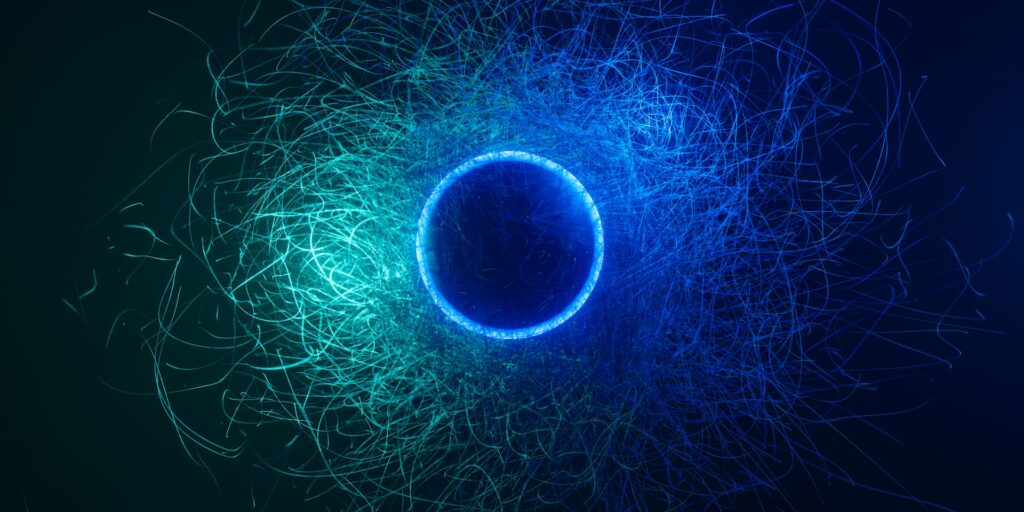
News reports mentioned scientists sending data “wirelessly”. That is not quite right.
A team at the University of Oxford did something remarkable. They linked two small quantum processors together. They used special fiber optic cables, like tiny data pipes for light. Think of it as physically wiring two quantum brains together.
The truly groundbreaking part wasn’t just sending data. Scientists have “teleported” quantum information before. The Oxford team used this teleportation technique in a new way. They teleported instructions, or basic computer operations (called logical gates). Imagine teleporting the “add” or “compare” command between computers.
By doing this, scientists achieved teleportation of operations. They made two separate quantum computers act like one bigger machine. They even ran a quantum algorithm across both linked processors. This is a huge step for distributed quantum computing.
Quantum 101: Qubits and Spooky Connections
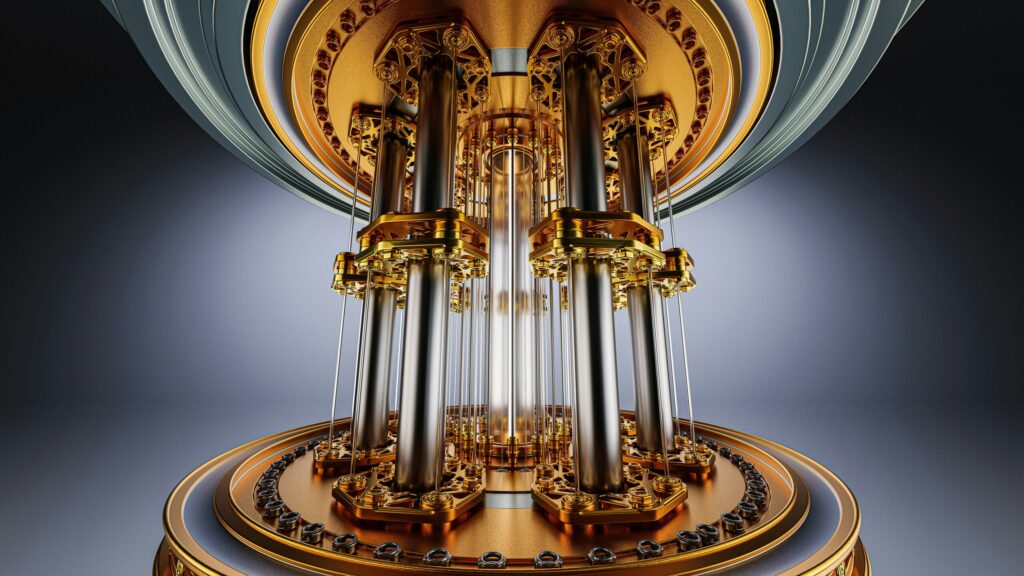
To understand this feat, we need a quick dive into quantum basics. It gets weird, but hang in there!
Qubits: Not Just 0s and 1s
Your phone or laptop uses “bits”. Bits are tiny switches that are either ON (1) or OFF (0). It is a simple binary system. Quantum computers use “qubits”. Qubits are different. Thanks to a quantum trick called superposition, a qubit can be 0, 1, or both at the same time!
Think of a spinning coin. While it is spinning, it is neither heads nor tails. It is in a superposition of both possibilities. Only when it lands (or when we measure a qubit) does it pick one state.
This ability to be multiple things at once gives quantum computers immense power. Two qubits can hold four states simultaneously (00, 01, 10, 11). Three qubits hold eight states. This power grows exponentially. A few hundred qubits can represent more states than atoms in the universe! This lets quantum computers explore many solutions at once.
Entanglement: Einstein’s “Spooky Action”
Here’s where it gets even stranger. Two qubits can become “entangled”. This means they form a deep connection. They act as a single entity, even miles apart. If you measure one entangled qubit and find it is a 0, you instantly know its partner is a 1. This happens no matter the distance!
Albert Einstein famously called this “spooky action at a distance”. He found it deeply unsettling. But countless experiments have proven it is real. Entanglement is a fundamental part of our universe.
Does this mean faster-than-light communication? Sadly, no. You cannot choose to make your qubit a 0 to send a 0 signal. The measurement outcome is random. You only know the correlated state of the partner after your random measurement. So, no breaking the cosmic speed limit!
Quantum Teleportation: How It Really Works
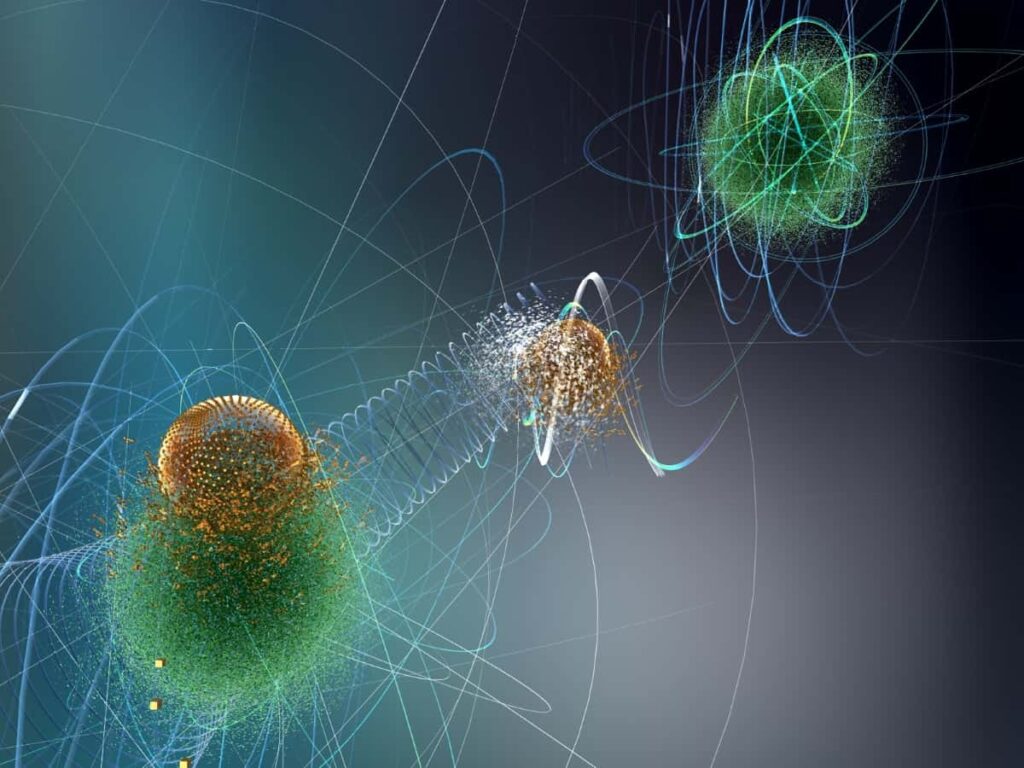
So, if entanglement can’t send messages instantly, what is quantum teleportation? It is a clever process using entanglement to transfer quantum information (the state of a qubit). It moves the state, not the physical particle. And it is not instantaneous. Here’s a simplified breakdown:
- Setup: Alice wants to teleport the state of Qubit X to Bob, who is far away. They each hold one qubit from a pre-shared entangled pair (let’s call them A1 and B1).
- Alice Measures: Alice performs a special joint measurement on her two qubits (Qubit X and A1).
- State Destroyed: This measurement “reads” the state of Qubit X but also destroys it at Alice’s end.
- Classical Instructions: The measurement gives Alice two regular bits of classical information (like 01, 10, etc.). Think of these as setup instructions.
- Send Instructions: Alice sends these two bits to Bob using a normal channel (like the internet or radio). This step is limited by the speed of light.
- Bob Reconstructs: Bob receives the two bits. Based on these instructions, he performs a specific operation on his qubit (B1).
- Success! Bob’s qubit B1 instantly transforms into an exact replica of the original state of Qubit X.
The quantum information disappears from Alice and reappears with Bob. This is how scientists achieved teleportation of quantum states. The Oxford team adapted this to teleport computer operations.
Why Link Quantum Computers? The Scalability Problem
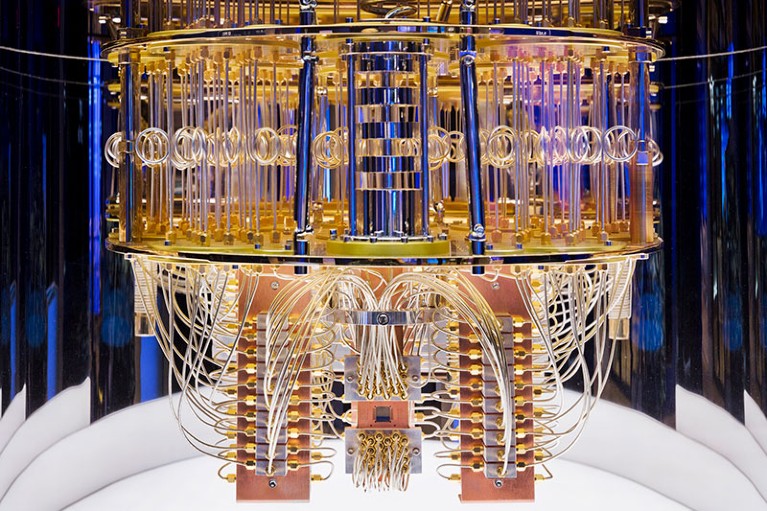
Why go through all this trouble to link small quantum computers? It is about solving the scalability problem.
Quantum computers are powerful but delicate. Building one massive machine with millions of qubits, needed for truly world-changing tasks, is incredibly hard.
Imagine trying to perfectly control millions of spinning coins in one giant box without any bumping into each other. It becomes an engineering nightmare. A single error can ruin everything. This “monolithic” approach might be impossible.
The Solution: Distributed Quantum Computing (DQC)
The Oxford experiment showcases a smarter path: distributed quantum computing (DQC). The idea is simple. Link many smaller, more manageable quantum computers together over a network. Make them work together as one giant quantum supercomputer.
Think of the regular internet cloud. It connects thousands of normal computers worldwide to share tasks. DQC is the “quantum cloud”. It offers a practical way to scale up quantum power.
The Oxford team proved the network link works for computation, not just data transfer. Using this, scientists achieved teleportation for networking purposes.
DQC offers another huge advantage: fault tolerance. Quantum calculations are easily disrupted by “noise” (like stray radiation). Quantum Error Correction (QEC) uses multiple physical qubits to protect one valuable “logical qubit” of information.
But on a single chip, one hit (like a cosmic ray) could corrupt multiple physical qubits at once, destroying the logical information (a correlated error).
DQC avoids this. By spreading the physical qubits protecting one logical qubit across separate modules, a single hit cannot damage them all simultaneously. This makes distributed quantum computing much more robust.
Building the Quantum Internet
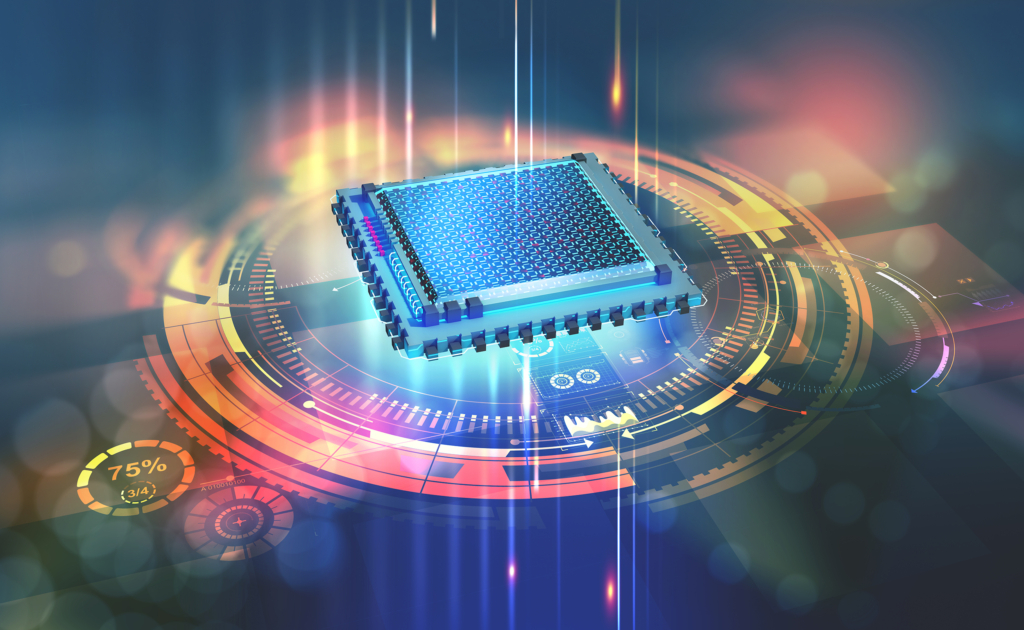
Scaling up the DQC concept from a local network to a global one leads to the quantum internet.
Don’t expect faster downloads. The quantum internet’s main goal is unbreakable security. Regular internet bits can be copied without a trace. But measuring a qubit changes it fundamentally. This means eavesdropping on a quantum signal always leaves evidence. This allows for things like Quantum Key Distribution (QKD), creating perfectly secure encryption keys.
How does teleportation fit in? Regular internet signals get weak over distance and need amplifiers to copy and boost them. But quantum physics has a strict No-Cloning Theorem. It is impossible to perfectly copy an unknown quantum state. So, you cannot amplify qubits classically.
The solution? Quantum repeaters! Instead of copying the signal, repeater nodes use quantum teleportation to pass the qubit’s state along, like a quantum “leapfrog,” without the signal itself traveling the whole distance.
Teleportation is the backbone technology making a secure quantum internet possible. Scientists achieved teleportation that paves the way. Excitingly, researchers have even shown that quantum teleportation can work over existing fiber optic cables carrying regular internet traffic!
Read: Your Brain is Hiding the Reality from You, And That’s Exactly What Keeps You Alive
Beam Me Up? Not So Fast…
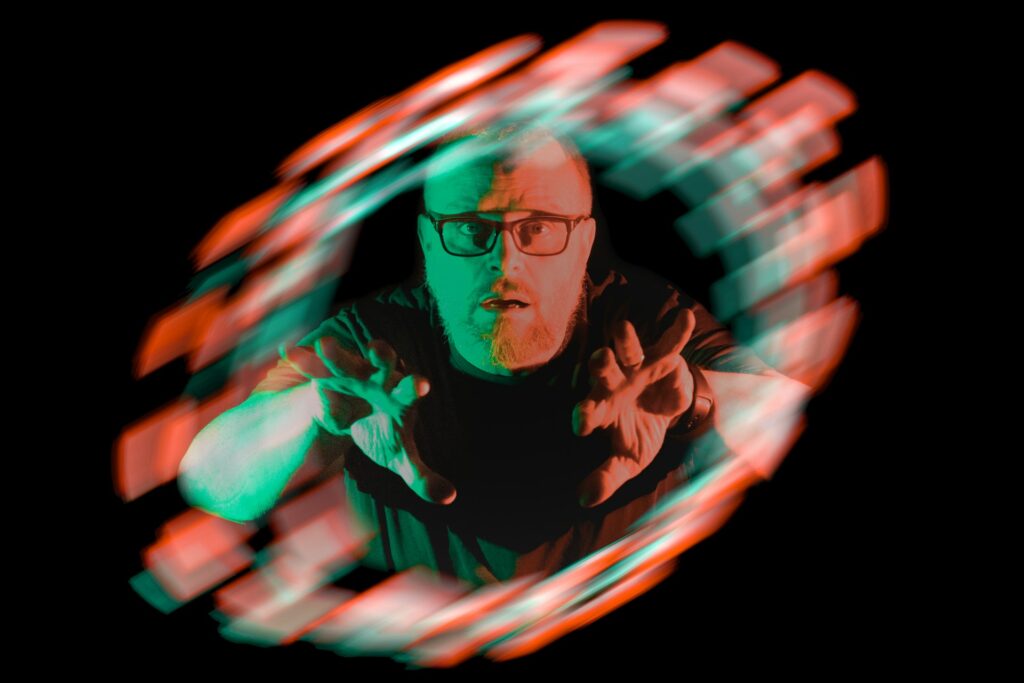
Let’s address the elephant in the room. Can we teleport people like in Star Trek? The short, definitive answer is no. Physics makes it impossible.
Quantum teleportation moves information (a state), not matter. It destroys the original state and recreates it on a different particle already at the destination.
To “teleport” a person, you would need to:
1. Scan the exact state and position of every single atom in their body (trillions upon trillions).
2. Transmit this unimaginable amount of data. Estimates for just the brain exceed $10^{42}$ bits!
3. Reconstruct a new body atom by atom at the destination.
Besides the colossal energy needed, the “scan” itself violates fundamental laws:
Heisenberg’s Uncertainty Principle: You cannot know both the exact position and exact momentum (speed and direction) of a particle simultaneously. Measuring one precisely fuzzes out the other. A perfect scan is impossible.
No-Cloning Theorem: As mentioned, you cannot perfectly copy an unknown quantum state. Scanning and rebuilding is cloning, which physics forbids.
So, the philosophical question (“Is the new person still you?”) is moot. Physics prevents the copy from ever being made. Quantum teleportation is “cut-paste,” not “copy-paste.”. The original state is destroyed in the process.
The Quantum Leap Ahead
While human teleportation remains firmly in science fiction, the reality of quantum information transfer is revolutionary. Scientists achieved teleportation between quantum processors, a key step towards powerful, networked quantum computers.
This opens doors to solving problems currently impossible for even the fastest supercomputers. Think designing new medicines molecule by molecule, creating unbreakable codes, revolutionizing AI, and discovering new materials.
The work on distributed quantum computing and the quantum internet is laying the foundation for a future where quantum technology changes everything. It is not Star Trek, but it might be even more impactful.